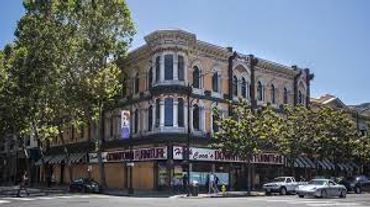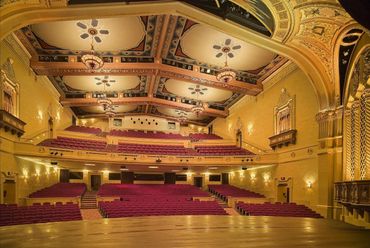Signed in as:
filler@godaddy.com
Signed in as:
filler@godaddy.com



At Reality Capture Technology Center, we are dedicated to making a difference in our community through various community programs. Join us in our mission to support local initiatives and create a brighter future for everyone. Explore our digital archives and see how you can get involved today!
Lesson Plan
Grade Levels: Middle School through Young Adult (Ages 12–24)
Duration: 2 Semesters / 32–36 Weeks
Format: Team-Based, Project-Oriented, Hands-On
Culminating Projects:
· - Online Historic Exhibit (posted in the RCTC history archive as part of our digital archives)
· - Final Presentation & Engineering Journal
SEMESTER ONE: Discovery, Research, & Capture
Weeks 1–2: Introduction & Orientation
Objectives
· Understand the goals of the RCTC program, which includes engaging with community programs
· Safety and care for reality capture tools
Activities
· Program overview & team formation
· Laser scanner & drone safety tutorials
· Tool demonstrations: terrestrial scanners, drones, DSLR/3D cameras
Team roles assigned
Signed safety contracts
Weeks 3–4: The Engineering Process
Objectives:
· Learn the steps of the engineering design process
· Plan project timeline
Activities:
· Workshop on iterative design & problem solving
· Team brainstorm: milestones, deliverables, research tasks
Deliverables:
· Engineering journal started
· Preliminary team schedule drafted
Weeks 5–8: Historical & Architectural Research
Objectives:
· Understand the historical relevance of assigned building
· Learn how to research deeds, styles, and historical context
Activities:
· Field trips (or virtual tours) of historic structures
· Archival research workshops
· Interview local historians or community members
Deliverables:
· Written historical background section
· Documentation of sources
Weeks 9–12: Engineering Planning & Site Mapping
Objectives:
· Create a full site documentation plan
· Define scanning points and drone flight patterns
Activities:
· Develop scan plot diagrams and schedules
· Walk the site and note data capture logistics
Deliverables:
· Scan plot and site map submitted
· Updated engineering journal
Weeks 13–16: Field Work – Data Capture
Objectives:
· Collect complete raw data sets using RCTC equipment and reality capture technology
Activities:
Conduct laser scanning, drone surveys, HD photo capture
· Take video footage and ambient audio (if applicable)
Deliverables:
· Raw point cloud and photo/video files
· Field notes logged in journal
_____________________________________________________
Objectives:
· Learn software tools for processing scan data
· Register scans into a single unified point cloud
Activities:
· Cloud registration tutorials (FARO Scene, ReCap, etc.)
· Edit and organize HD photos and drone footage
Deliverables:
· Aligned point cloud model
· Processed image gallery
Objectives:
· Generate presentation-ready 3D walkthroughs
· Begin building the structure’s digital twin
Activities:
· Use SketchUp or Revit to model key building elements
· Create animated fly-throughs or VR previews
Deliverables:
· Draft model file
· 30–60 second fly-through video
Objectives:
· Translate research and media into a virtual exhibit
Activities:
· Design user-friendly exhibit layout (pages, menus, media embeds)
· Create photo tour and narrative captions
Deliverables:
· Online exhibit draft ready for review
Objectives:
· Finalize online exhibit
· Review and polish engineering journals
Activities:
· Peer review sessions
· Final QA check: links, load time, spelling, credits
· Upload exhibit to RCTC history archive
Deliverables:
· Final engineering journal (with design logs, research, and field notes)
· Public exhibit URL
Objectives:
· Demonstrate mastery
· Celebrate student achievement
Activities:
· Team presentations: overview, challenges, discoveries
· Display selected work in a showcase or community event
Deliverables;
· Final presentation (oral + slides or media)
· Certificates of completion
· - Engineering Journal Rubric: Accuracy, depth, clarity, reflection
· - Exhibit Rubric: Historical content, technical quality, usability, originality
· - Teamwork & Process Rubric: Collaboration, organization, engagement



Engaging our next generation of Architects, engineers, entrepreneurs, and innovators through our Community Programs, while also utilizing Digital Archives and Reality Capture techniques.
We love our customers and encourage you to visit during normal business hours to learn more about our Community Programs, explore our Digital Archives, and discover the benefits of Reality Capture.
Open today | 09:00 am – 05:00 pm |

We are a 501c3 organization dedicated to supporting Community Programs that enhance local engagement. Our efforts also include the development of Digital Archives and innovative Reality Capture techniques to preserve and share our community's history.
Team Project: David Chan from Santa Teresa High School, Ken Chau from Independence High School, and Sheldon Debebe from Oak Grove High School collaborated on community programs that utilize digital archives and reality capture technology.
THE KELLY MANSION
2012 Summer Camp - Team Project for the City of San Jose, focused on enhancing Community Programs through innovative approaches such as Digital Archives and Reality Capture.
The 2017 Summer Engineering Camp Project was an integral part of our Community Programs, aimed at engaging young minds in innovative engineering concepts. Participants had the opportunity to explore the use of Digital Archives, enhancing their understanding of historical engineering projects. Additionally, the camp introduced students to Reality Capture technologies, allowing them to visualize and interact with engineering designs in a dynamic way.
THROUGHOUT THE YEARS
1892- Building Opens as San Jose's Main Post Office, serving the community with essential services.
1906- Earthquake Causes Major Damage to the Steeple and Clock Tower, leading to significant restoration efforts.
1937 to 1969- San Jose City Library, which played a vital role in community programs and literacy.
1972- Designated Historic Landmark #854, preserving its historical significance for future generations.
1973- Added to National Registry of Historic Places, recognizing its cultural importance.
1974- Renamed San Jose Museum of Art, expanding its focus to include various art forms.
1991- New 45,000 sq.ft. Wing Added, enhancing exhibition space and community programs.
Late 1990s- Major Seismic Retrofit, ensuring the building's safety and longevity.
1997- Building reopens as SJ Museum of Modern Art, featuring innovative digital archives and showcasing reality capture techniques.
August 19-20, 2020 - Wildfires sparked by lightning storms swept across Mt. Hamilton. Thanks to the heroic efforts of firefighters and the support of community programs, the world-renowned institution was saved. The incident is now part of our digital archives, showcasing the importance of reality capture in documenting such critical events.
History Park, located in San Jose, CA, showcases various community programs aimed at engaging local residents. In 2015, a summer engineering project was undertaken by Hector Ponce, Bobby Hue, and Ben Kincaid from Milpitas High School, which contributed to the park's digital archives through innovative reality capture techniques.





.jpg/:/rs=w:370,cg:true,m)